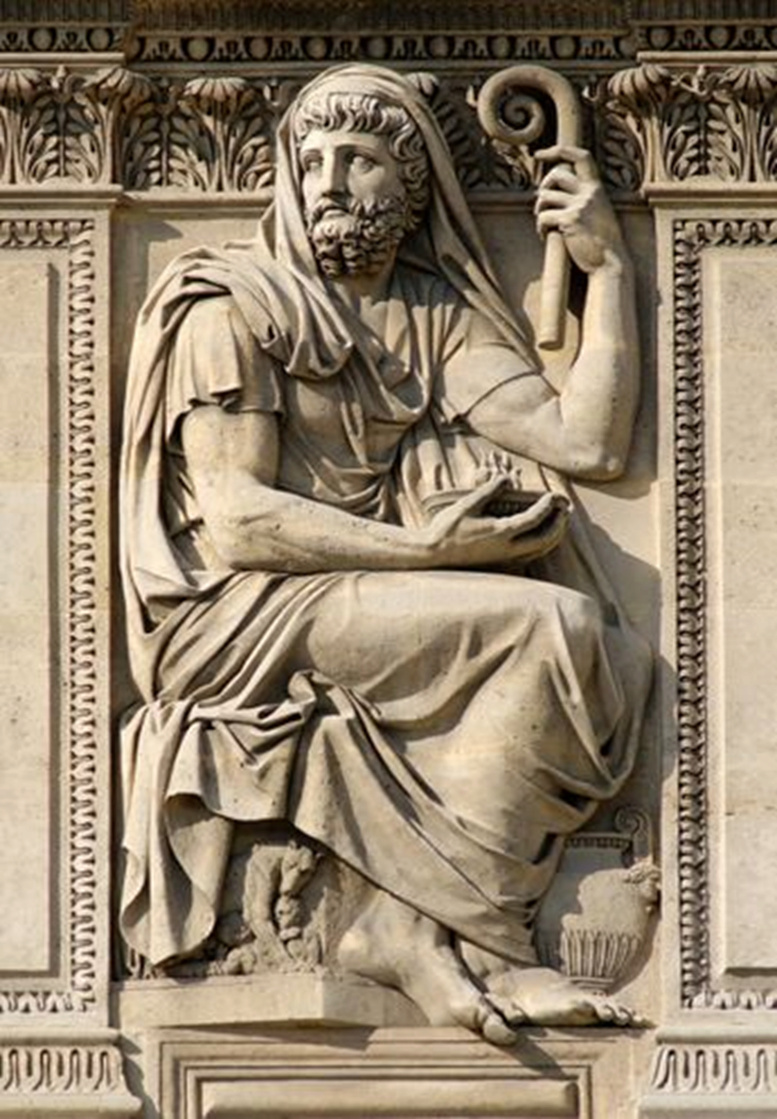!This is what the ancient world historian Herodotus said about the first Amazighs

The Amazighs called themselves "free men" or "Imazighen" as a challenge to powerful empires that swallowed up half of the lands of the ancient world. They were called "Berbers" by other nations because of their resistance to their opponents or their distance from the culture of others, and sometimes the "Mauritanians". In other books by ancient historians, they appear under names such as "Libyans" or "Africans".
The Amazighs have held many titles, some of which carry geographical epithets for a people who have always fallen on the margins of great empires, but other designations carry "slanderous connotations" known to history students, as "the victor conquers the vanquished even in the stomachs of books ."
The historian of the ancient world, Herodotus (about 484 BC - 425 BC), preferred to describe the first Amazighs as "Libyans", a designation that was applied to all the peoples of North Africa (nomadic and non-nomadic) during the period in which he wrote his huge book "The History of Herodotus" . . _
"People with enormous bodies"
"Undoubtedly, I do not know more healthy people than the Libyans," Herodotus says, adding that the peoples of these regions bordering Egypt "offer sacrifices to the sun and the moon, but do not worship other gods than themselves. The worship of the sun and moon is common and common to all Libyans. "

He explains why the peoples of the North African region enjoy a strong muscular structure that does not succumb to disease, saying, "When their children reach the age of four, they burn veins in the front of their heads with sheep's wool. Some do this ritual around the temples." "They say that this is why they are so much healthier than other peoples," Herodotus says. "I can't confirm whether this remedy is the secret of their health, but they are healthy."
This historian - who was called the "Father of History" by the preacher of Rome and the famous philosopher Cicero - talked about the customs of the funeral of the dead among the Amazighs, saying, "They bury their dead according to the Greek style, except for the Nasamonians (nomadic Amazighs). They bury their dead in a sitting position."
The Greeks used to mourn their dead during the period of Herodotus - that is, after 1100 BC - "in individual graves instead of collective graves. However, Athens represented an important exception, as the Athenians burned their dead and put their ashes in an urn."
Regarding the dwellings of the Amazighs, he says that the houses of some of them are made of "branches of plum trees and rush herbs. They can be carried from place to place," adding, in another place, that "other Libyans plow the land and live in houses. They leave their hair to grow long on the right side of their heads, while they shave the left side."
And about their women, Herodotus wrote that they participate in wars with men, and their mission is limited to driving war chariots.

The ancient Egyptians invented this deadly weapon when the Hyksos attacked Egypt around 1650 BC.
Today, the "wheel" is considered the first armored vehicle in human history, as it contributed to changing the course of many wars.
The influence of the Amazighs on the Greeks
Herodotus admits that the Greeks borrowed a set of customs from the Libyans.
Minerva, a Greek goddess, was later merged by the Romans with another Greek goddess, Athena, to become "the goddess of reason and wisdom and the goddess of all skills and arts."

Statues of Minerva still adorn many European museums today.
And Herodotus adds: "The clothes of the Libyan women are made of leather. Except for that, the clothes of the Greeks and the Libyans are completely similar," and this also appears in the clothes of the other Greek deity Pallas , "The clothes of her statues came from Libya."
In this part that he devoted to the first Amazighs, Herodotus left talking about the things that were influenced by the Greeks to talk about the Amazigh woman, saying, "As for the Libyan woman, she wears leather (especially goat skin), trimmed on the edges and colored in scarlet," adding, "I think, for my part, that the wailing What we utter during our sacred rites also came from there (Libya), because Libyan women are skilled at this wailing and pronounce it very gently.”
In the field of horsemanship, he says, "the Greeks also learned from the Libyans to pull four horses into one chariot."
In all, Herodotus is a historian who was the son of a civilization that dominated the ancient world, and as such, his book came to bear the concerns of the Greeks mainly. And always, the conquered peoples came on the sidelines, and for this reason he did not mention many details about the ancient Amazighs except to return to talking about the wars of two great powers at that stage: the Persians and Greece.

In the end, although Herodotus is described as the "father of history", his huge author was not spared criticism , as the book undoubtedly includes some legends and myths spread in the culture of his time, but he insists that he seldom relied on sources other than his observations and experience. own.
Mohamed Asaadi
Source : websites

